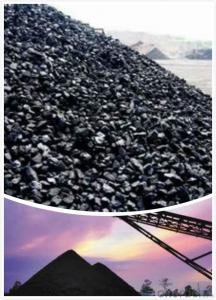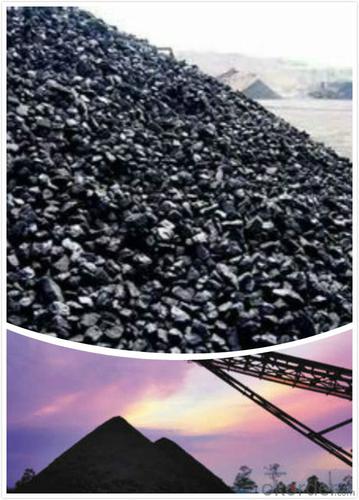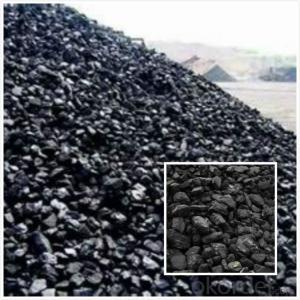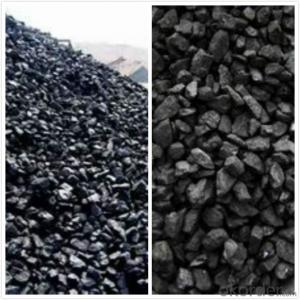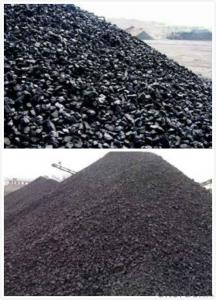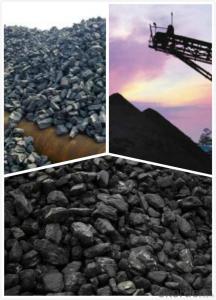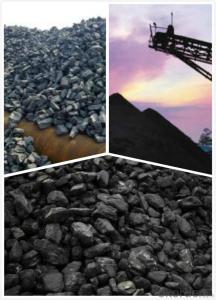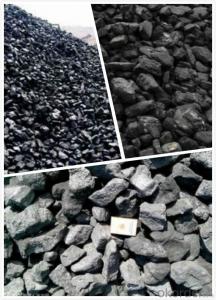High Quality Foundry Coke of China Supplier
- Loading Port:
- Qingdao
- Payment Terms:
- TT OR LC
- Min Order Qty:
- 1500 m.t
- Supply Capability:
- 15000 m.t/month
OKorder Service Pledge
OKorder Financial Service
You Might Also Like
Product Description
The coke handled by our couporation is made from superior coking coal of Shanxi province. Provided with the dvantages of low ash, low sulphur and high carbon.Our coke is well sold in European,American,Japanese and South-east Asian markets. Our owned Coke plant are located in Shanxi Province and supplying of you many kinds of coke.
Features
This is a special coke that is used in furnaces to produce cast and ductile iron products. It is a source of heat and also helps maintain the required carbon content of the metal product. Foundry coke production requires lower temperatures and longer times than blast furnace coke.
Specification
Fixed Carbon | Sulphur Content | Moisture | V.Matter | Ash |
86%min | 0.7%max | 5%max | 1.2%max | 12%max |
88%min | 0.65%max | 5%max | 1.5%max | 10%max |
85%min | 0.8%max | 15%max | 2%max | 13.5%max |
Size: 60-90mm,90-120mm,120-150mm,150-180mm and so on.
Pictures


FAQ:
1 How long can we deliver the cargo?
Within 30 days after receiving the LC draft or down payment
2 Time for after-sales?
1 year.
3 How about payment terms?
L/C, D/P, T/T with down payment
- Q: What are carbon credits and how do they work?
- Carbon credits are a market mechanism designed to reduce greenhouse gas emissions. They work by assigning a monetary value to each ton of carbon dioxide or other greenhouse gases that are not released into the atmosphere. This value is assigned through a process called carbon offsetting, which involves investments in projects that reduce emissions, such as renewable energy projects or reforestation initiatives. These projects generate carbon credits, which can be bought and sold by companies or individuals to offset their own emissions. By purchasing carbon credits, entities can effectively compensate for their own carbon footprint and contribute to global efforts in mitigating climate change.
- Q: What are the impacts of carbon emissions on the availability of freshwater resources?
- Carbon emissions have a significant impact on the availability of freshwater resources. One of the primary effects is the alteration of the global climate system. Increased carbon emissions lead to the greenhouse effect, which causes global warming. As a result, the Earth's temperature rises, leading to changes in weather patterns and precipitation. These changes in weather patterns can disrupt the water cycle, which crucially affects the availability of freshwater. Warmer temperatures increase evaporation rates, causing more water to be lost from lakes, rivers, and groundwater reservoirs. This leads to a reduction in the overall volume of available freshwater. Furthermore, global warming can exacerbate drought conditions in some regions. As carbon emissions contribute to rising temperatures, the frequency and intensity of droughts increase. This further reduces freshwater availability, as precipitation is limited, and water sources become depleted. Carbon emissions also impact freshwater resources through their effect on melting polar ice caps and glaciers. As the Earth warms, these frozen water sources melt at an accelerated rate, adding additional freshwater to the global water system initially. However, once these ice sources are depleted, the loss of freshwater will be significant. This process not only decreases the overall volume of freshwater available but also affects the quality of freshwater resources, as the melting ice can introduce pollutants and contaminants into the water. Moreover, carbon emissions contribute to ocean acidification, which has indirect effects on freshwater resources. Increased carbon dioxide in the atmosphere is absorbed by the oceans, leading to acidification. This change in the ocean's chemistry can harm marine ecosystems, including coral reefs, which are crucial for maintaining the health of coastal freshwater sources such as aquifers. To mitigate the impacts of carbon emissions on freshwater resources, it is vital to reduce greenhouse gas emissions and transition towards cleaner and renewable energy sources. Additionally, implementing effective water management practices, such as conservation measures, efficient irrigation systems, and the protection of water sources, can help preserve and sustain freshwater resources in the face of climate change and carbon emissions.
- Q: How does carbon pricing work?
- Carbon pricing is a market-based approach that puts a price on carbon emissions, either through a carbon tax or a cap-and-trade system. The aim is to create an economic incentive for businesses and individuals to reduce their greenhouse gas emissions. By putting a price on carbon, it encourages companies to invest in cleaner technologies, reduce their emissions, or purchase emissions allowances from other entities. This mechanism helps to address climate change by reducing carbon dioxide emissions and promoting the transition to a low-carbon economy.
- Q: Speak in detail! I am ~ carbon Roast Lamb Leg lamb chops lamb barbecue ah ~ ~ how to do with practice video line! And how do you bake the oven?
- Step 1: the leg with a knife cut, and then put into the seasoning pickled, according to the guests taste add salt, pepper, fennel, pepper and so on, this time can not add cumin. These ingredients should be fully blended and then applied to the surface of the meat. Then sealed with a sealed instrument to allow the meat to be fully salted and flavored, preferably 3 hours.
- Q: What are carbon-based superconductors?
- Carbon-based superconductors are materials that exhibit superconductivity, which is the ability to conduct electricity with zero resistance, at relatively high temperatures, using carbon as the main component. These materials have unique properties that make them promising candidates for various technological applications, such as energy storage and transmission systems.
- Q: How does carbon affect the ozone layer?
- Carbon does not directly affect the ozone layer. However, certain carbon compounds, such as chlorofluorocarbons (CFCs) and hydrochlorofluorocarbons (HCFCs), can indirectly contribute to the depletion of the ozone layer. These compounds contain chlorine and bromine atoms, which are released into the atmosphere when the compounds are broken down by sunlight. Once in the atmosphere, chlorine and bromine atoms can catalytically destroy ozone molecules, leading to a thinning of the ozone layer. When a chlorine or bromine atom comes into contact with an ozone molecule, it reacts with it, breaking it apart and forming a chlorine or bromine oxide molecule and a regular oxygen molecule. The chlorine or bromine oxide molecule can then react with another ozone molecule, continuing the cycle and depleting the ozone layer. While carbon itself does not directly contribute to ozone depletion, the production and release of carbon compounds like CFCs and HCFCs result from human activities. These compounds were widely used in various industries, such as refrigeration, air conditioning, and aerosol propellants, until it was discovered that they were harmful to the ozone layer. The Montreal Protocol, an international treaty signed in 1987, aimed to phase out the production and use of these ozone-depleting substances. Reducing carbon emissions, however, is crucial in addressing another environmental concern – climate change. High levels of carbon dioxide and other greenhouse gases in the atmosphere trap heat, leading to global warming. This poses various threats to ecosystems and human societies. By transitioning to cleaner and more sustainable energy sources and implementing measures to reduce carbon emissions, we can tackle both ozone depletion and climate change, safeguarding the health of our planet.
- Q: Why carbon fiber resistant to low temperature
- Resistance to 180 DEG C carbon fiber can be low temperature, under this condition, many materials are brittle, even sturdy steel has become fragile than glass, and carbon fiber under this condition is still very soft.
- Q: What is the concept of carbon equivalent? What is the relationship between carbon equivalent and weldability?
- There are a lot of carbon equivalent indexes such as tensile strength, yield strength of carbon equivalent, carbon equivalent, welding carbon equivalent, and crack sensitivity index (which is essentially carbon equivalent).
- Q: Carbon 60 related information
- Discovery and structural features of carbon sixtyIn October 7, 1996, the Royal Swedish Academy of Sciences decided to award the 1996 Nobel prize for chemistry to Robert FCurl, Jr (USA), Harold WKroto (UK) and Richard ESmalley (USA) in recognition of their discovery of C60.In early September 1995, Rice University of Texas Smalley lab, Kroto etc. in order to form the process simulation of carbon clusters N near the red giant in the atmosphere, the laser gasification experiment of graphite. They found that there is a series formed by an even number of carbon atoms from the molecular mass spectra, which have a 20~25 times larger than the other peak peak, the peak corresponding to the quality of the number of molecules formed by 60 carbon atoms.What structure of C60 molecules can be stabilized? Layered graphite and diamond tetrahedral structure exists in the form of two kinds of stable carbon, when 60 carbon atoms arranged in any of them, there will be many dangling bonds, will be very lively, not showing the mass signal so stable. This shows that the C60 molecule has a completely different structure from graphite and diamond. Inspired by architect Buckminster Fuller composed of pentagons and hexagons dome building, Kroto thinks that C60 is composed of 60 spherical carbon atoms with 32 sides, i.e. 12 pentagons and 20 hexagons, so there is no double bond in C60 molecule.In C60 molecules, each carbon atom with three carbon atoms in SP2 hybrid orbitals and the adjacent connected, a hybrid P track did not participate in the remaining in the C60 shell periphery and the cavity formed spherical PI key, thus having aromatic. In honor of Fuller, they proposed the use of Buckminsterfullerene to name C60. Later, all the molecules containing even numbered carbon, including C60, were called Fuller, and the name was fullerene.
- Q: How is carbon dioxide formed?
- Carbon dioxide is formed through various natural and human activities. It is naturally produced by the respiration of animals, the decay of organic matter, and volcanic eruptions. Additionally, human activities such as the burning of fossil fuels, deforestation, and industrial processes also contribute to the formation of carbon dioxide.
Send your message to us
High Quality Foundry Coke of China Supplier
- Loading Port:
- Qingdao
- Payment Terms:
- TT OR LC
- Min Order Qty:
- 1500 m.t
- Supply Capability:
- 15000 m.t/month
OKorder Service Pledge
OKorder Financial Service
Similar products
Hot products
Hot Searches
Related keywords
